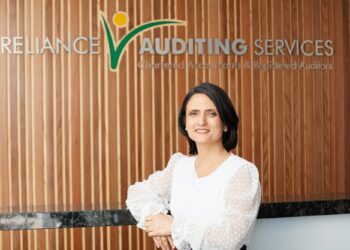With LRBAs having grown substantially since 2007, Creation Wealth director Andrew Zbik said those using the strategy of establishing SMSFs to purchase a residential investment property should ensure it can meet certain guidelines when considering if such a strategy is appropriate for their clients.
Whilst ASIC is of the opinion that a minimum of $500,000 is required to establish an SMSF, Mr Zbik said lenders are now requiring a 10 per cent liquidity buffer of cash and/or shares outside of the value of the property.
“The Australian Taxation Office has also highlighted the obligations of SMSF trustees to consider asset diversification within the fund,” he said.
“Thus, the days of starting an SMSF with a balance of $200,000 to buy an investment property as the sole asset of the fund are no longer deemed to be in the best interest of the members of the fund due to a lack of asset diversification and a lack of liquidity.
“Other considerations are if the fund has two members earning an income, would the ability of the SMSF to service the debt be affected if one of the members loses their job? I always base lending capacity on one income only. This helps to preserve cash flow in the unfortunate situation where a member may be out of work for a few months.”
Mr Zbik also noted that the strategy is not ideal for people who have less than ten years to work.
“A full property cycle in Australia is around 10 years. You need to give time for your property to grow in value. Ideally, the intention should be to hold the property beyond this minimum time period of 10 years,” he said.
“Once a superannuation fund owns an investment property, the only time I envisage that the property needs to be sold is when all the debt has been paid off and the sale of the property will allow the net proceeds to be invested into another asset class that provides a higher income yield.”
The average gross rental yield for property in Australia currently hovers between 3.5 per cent to 4.5 per cent. A good portfolio of exchange-traded funds (ETFs) and some direct shares can provide a dividend yield of between 3 per cent to 5 per cent with the prospects of capital growth too, according to Mr Zbik.
“A good portfolio of fixed income assets such as bonds can provide a stable income of between 2 per cent to 4 per cent but with limited capital growth prospects,” he noted.
“Thus, I believe property is a great asset to provide leverage and capital growth, but property is not necessarily the best income-producing asset to provide an income stream to fund an account-based pension. With property, it is not possible to shave off a bedroom and sell it to provide cash for pensions.”
Protecting cash flow and planning for loan repayment
When utilising LRBAs it is also important to consider changes to member situations and uncertain events which can impact the process.
“What happens if one of the members loses their job? Or if you lose a tenant? I always recommend that an SMSF hold a cash buffer that amounts to six months of all property expenses, which includes loan repayments and rental costs such as landlord insurance, strata fees and council rates.” Mr Zbik said.
“This additional cash buffer may be held in an offset account against the superannuation fund loan. That way you are helping to reduce your lending expenses via the rate of interest paid. It also helps to improve the cash flow of the fund.”
A good diversification strategy would also include other liquid assets such as Australian shares, international shares, and fixed-income securities, according to Mr Zbik.
In a worst-case scenario, if the members of the fund are not working for a period longer than six months, there are other assets available to liquidate without relying on a “fire sale” of the property.
Whenever funds take on a loan, members also need a plan to pay down this loan.
“Will your concessional contributions be enough to pay out the loan? Will you need to make extra contributions to your SMSF to have the property loan paid down before retirement? These questions need to be answered,” Mr Zbik continued.
“Most people are only receiving the statutory superannuation guarantee of 10 per cent. I never rely on a debt reduction plan that involves selling the asset itself. This is actually against best practice when obtaining credit.
“I like it when clients have the ability to make additional superannuation contributions to the fund or have other assets in the fund outside of the property (such as shares or ETFs) that produce income and capital growth. This additional cash flow, capital growth and income can be used to reduce the debt without relying on the sale of the property itself.”



Gross Rental Yield is reduced by council rates, land tax, insurance, repairs, depreciation, inter alia. Net rental yield is often negative, especially for residential. Rental properties may not produce cash to pay a pension, or other benefit, such as disability.
The dividend on shares is usually net of expense – WYSIWYG. Dividends and interest are available to pay that unexpected disability pension, rent might not be.
Am I missing something?
[i]”gross rental yield for property in Australia currently hovers between 3.5 per cent to 4.5 per cent”
“exchange-traded funds (ETFs) and some direct shares can provide a dividend yield of between 3 per cent to 5 per cent”
“fixed income assets such as bonds can provide a stable income of between 2 per cent to 4 per cent”[/i]
Yet his conclusion is that [i]”property is not necessarily the best income-producing asset”[/i]
I’ve just handed back my license and now all advice in this area will be done at a client’s request (ie) execution only. That’s a much more efficient solution